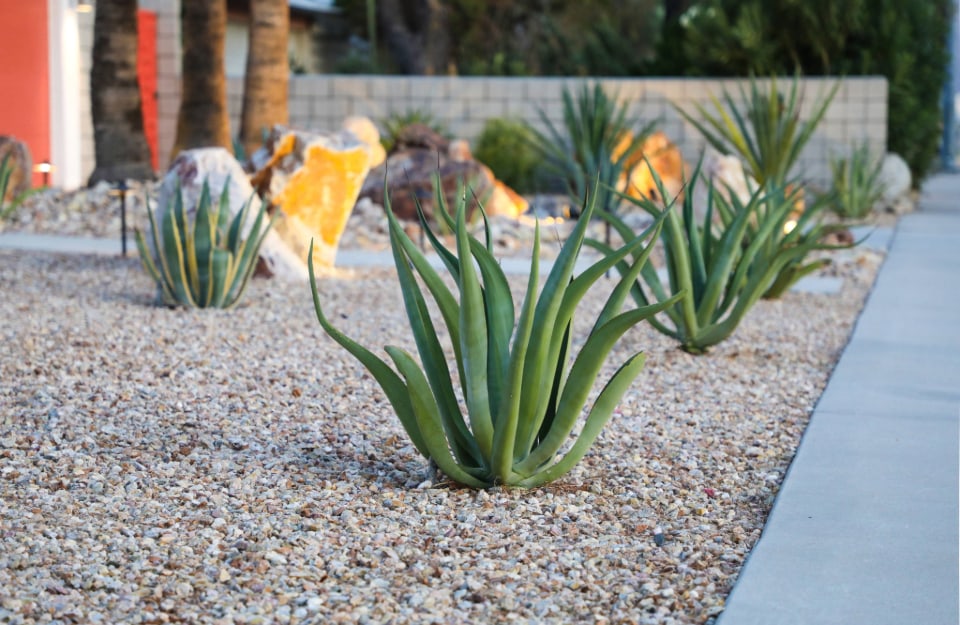In the world of gardening and landscaping, a trend that has gained increasing popularity in recent years is the so-called dry garden. This sustainable, low-maintenance form of gardening is spreading rapidly due to the increased focus on resource use, and because of the increasingly dry seasons due to climate change.
What is a dry garden?
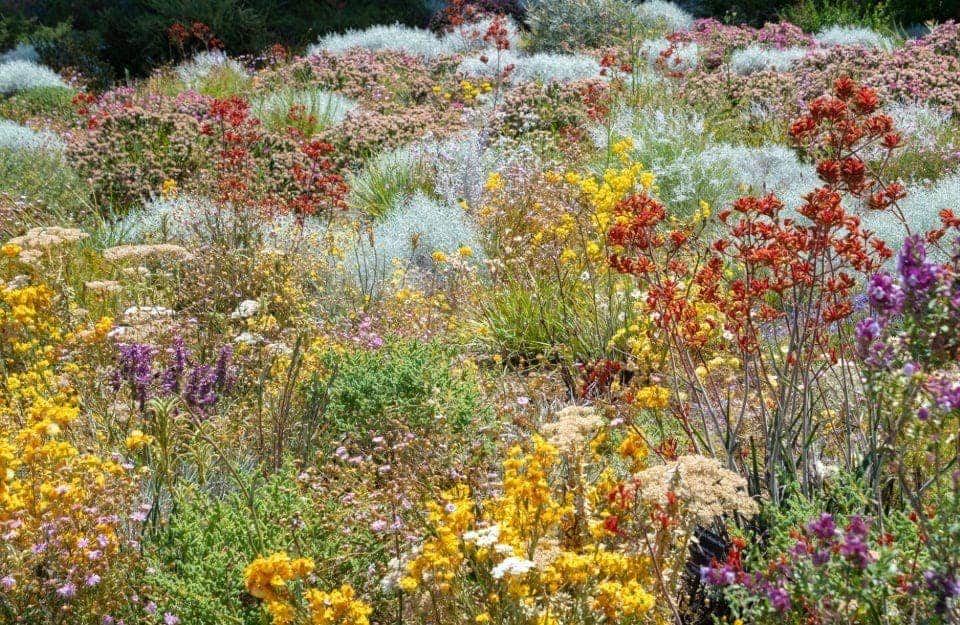
A dry garden is a type of garden designed for low irrigation requirements. It is based on plants capable of living in arid conditions and able to withstand long periods of drought. Inspired by desert landscapes (but also by Japanese gardens) the dry garden can include a wide range of succulents. Indeed, with a view to sustainability, it is advisable to select native plants and wild species. What are usually classified as ‘weeds’ can in fact give a lot of satisfaction, if there is proper garden design behind it. It is also called xeriscaping, a recently coined term that combines English landscaping (i.e. “landscape management”) with the Greek xeros (“dry”).
The advantages of a dry garden

- Water saving. With growing concerns about water scarcity in many parts of the world, and increasingly long periods of drought in both hot and cold seasons, a dry garden offers a solution that drastically reduces the need for and consumption of water.
- Low maintenance. Once planted, this type of garden requires much less work than traditional ones. Since the plants are adapted to arid conditions, there is no need to water frequently or worry about frequent maintenance.
- Adaptability. Dry gardens are particularly suitable for areas with little rain, but can also be created in other contexts, provided the right plants are chosen.
- Biodiversity. The use – as already mentioned – of wild and native plants that are resistant to arid environments reduces dependence on fertilisers and pesticides and promotes biodiversity.
- Aesthetics. If well designed, a dry garden is a spectacle for the eyes and all the senses, offering ever-original views that change throughout the year.
The 5 basic rules for creating a dry garden
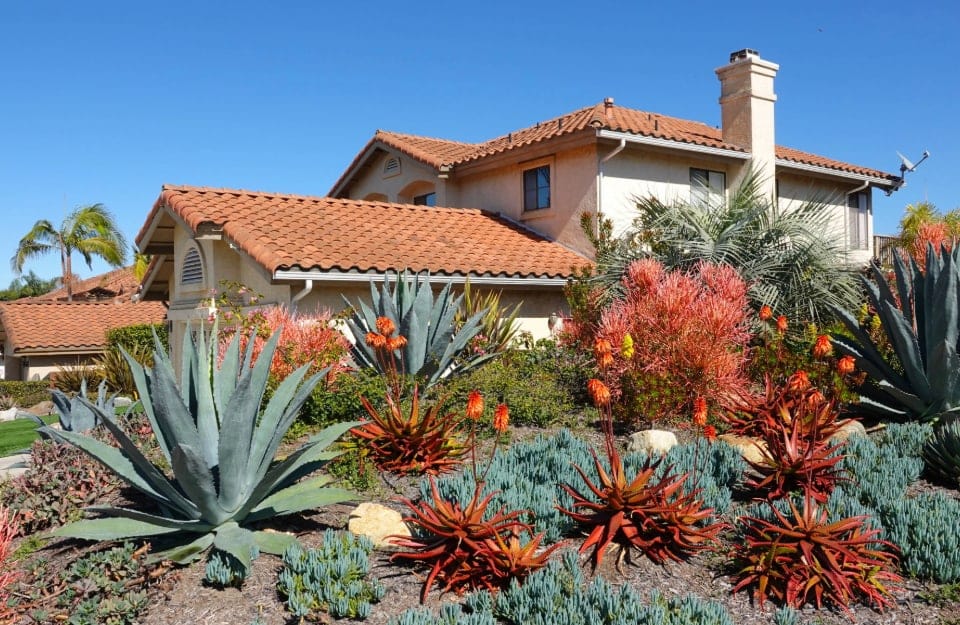
- Thoughtful choice of plants: native species or those that have adapted to thrive in arid conditions should be selected. Apart from succulents there are many other plants suitable for use.
- Garden planning. All aspects must be considered: topography and soil type, exposure to the sun, position of the various plants, overall effect, use of materials such as rocks, wood and gravel.
- Hydrozoning. It consists of grouping plants according to their water requirements. In this way, stress from under- or over-watering is more easily avoided.
- Drainage. Water stagnation must be avoided, so it is essential to ensure good drainage of the soil.
- Starting maintenance. Despite needing less maintenance than other garden types, the dry garden requires a great deal of attention, both in the preparatory phase (more complex than other garden types) and in the initial stages after planting.
What are the most recommended plants for a dry garden in Italy?
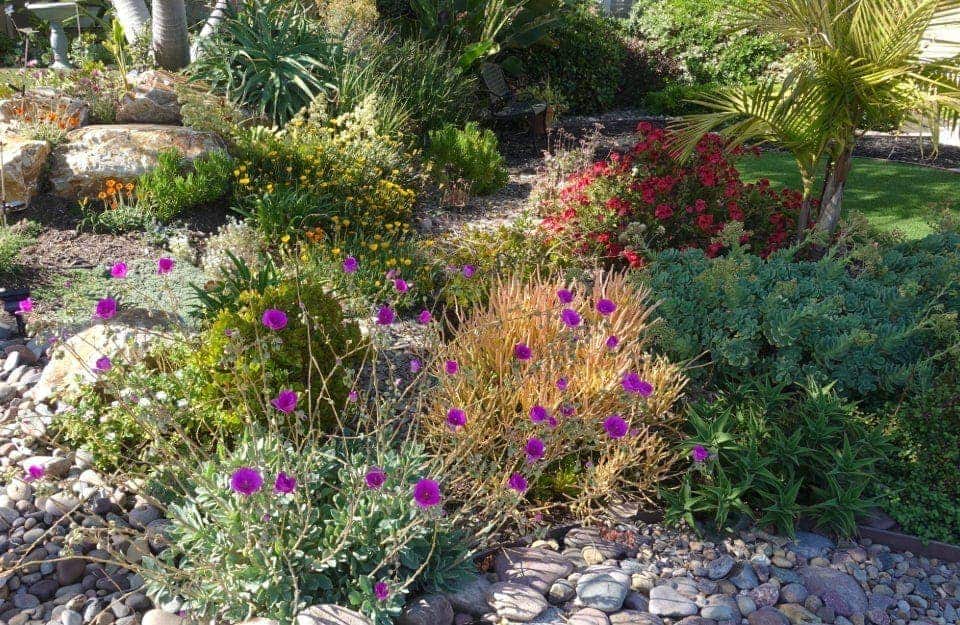
In our country there are thousands of species that can potentially be used in a dry garden. Here are some of the most widely used:
- Lippia nodiflora or hybrid Verbena to replace the lawn. They are perennial ground cover plants that require little water and minimal maintenance;
- Sedum: another wallflower. It is a succulent particularly suitable for rock gardens. It also grows well in wall cavities;
- Lavender: prized for its fragrant flowers, it is drought-resistant and adapts well to warm, sunny climates. It gives colour (and fragrance) to the dry garden;
- Perovskia: the “Russian sage”. It is a perennial with a sage-like scent and a flowering habit reminiscent of lavender;
- Rosemary: very hardy, can be used in cooking;
- Thyme: another very hardy aromatic;
- Echinacea: a medicinal plant with colourful flowers that attracts butterflies;
- Broom: lights up spring with its little yellow flowers;
- Oleander: a shrub that gives flowers throughout the warm season and also thrives in poorly irrigated areas;
- Cistus: a small, rounded shrub typical of the Mediterranean maquis;
- all cactaceae and succulents;
- ornamental grasses such as Fairy Flax (Stipa tenuissima) or Pennisetum.
The most suitable garden furniture for a dry garden
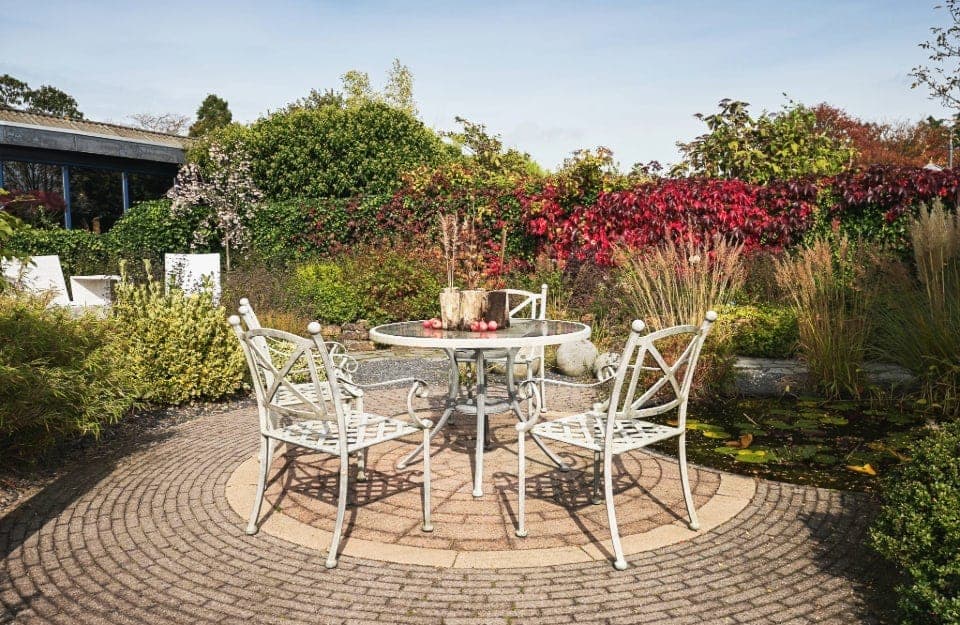
For a dry garden, it is important to choose furniture that blends well with the natural aesthetics of the garden, as well as being resistant to the climatic conditions of the location. The main materials will be stone, wood and metal, as well as terracotta for pots and decorations. Rattan and wicker also add texture and ‘warmth’ to the outdoor space, fitting in well with natural colours, especially in summer. Wooden elements should of course be treated to ensure their long life. We recommend the topcoats for exterior from Renner Italia’s Rio Verde range, which includes different types of wood stains.
These are highly resistant products that protect wood against weathering and UV radiation. With a view to low maintenance, the most convenient solution is Hybrid Resolve, which is water-based and quick-drying.
Its strength, in addition to its excellent wood protection performance, is its ability to self-consume. In practice, it does not ‘flake off’ and there is no need to sand: just reapply a couple of coats.
As far as the formal aspect is concerned, minimal lines go best with the atmosphere of the dry garden. Overly elaborate or bulky furniture that could disturb the visual balance of the landscape.

